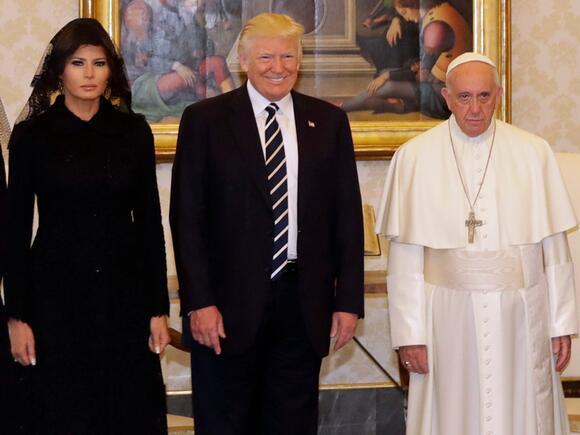The US has been absent from the South Caucasus for over a decade, has poor relations with Turkey and is traditionally focused on only Georgia, as during US Secretary of Defence Lloyd Austin’s October visit to the South Caucasus while ignoring Azerbaijan and Armenia. Meanwhile, the EU works with Georgia and Armenia in the Eastern Partnership, has like the US, poor relations with Turkey and ignores Azerbaijan.
Both the US and France, representing the EU, have gone AWOL from the Minsk Group established to broker peace in the Azerbaijani region of Karabakh. The US needs to reassert its presence in the South Caucasus to counter the Iranian-Russia alliance. During the September-November 2020 Second Karabakh War it was not Russia that intervened on Armenia’s side, as many expected and Yerevan hoped for, but Iran; Russia and Armenia are members of the Collective Security Treaty Organisation which brings together six Eurasian states. Iran’s occupation of Azerbaijani territory was aimed at holding up the westward advance of Azerbaijani forces along the Aras River border or, in the event of this leading to hostilities, to open a second front and thereby reduce military pressure on Armenia. This would have led to a regional conflagration by bringing in Turkey and Pakistan on Azerbaijan’s side and Russia in support of Iran. In retaliation the Azerbaijani Ministry of Foreign Affairs threatened to encourage dissent among Iran’s large Azerbaijani minority who account for between a quarter to a third of its population and supported Baku in the war.
There should have been no surprise that war had been possible because of the poor state of Iranian-Azerbaijani relations that had deteriorated in the last few months. After all, Iran – the home of the world’s most hard-line theocracy – chose to support a Christian country (Armenia) over a Shiite country (Azerbaijan) throughout the nearly three-decade former’s occupation of 20% of the latter’s territory. As Prime Minister Nikol Pashinyan said, ‘we will never forget that in the early 1990s Iran was dearly important for Armenia.’
To top this, last month Iran held thefirst ever military exercise on its border with Azerbaijan and hurled incendiary and aggressive rhetoric against Baku. Iran used the cover of the military exercise to leave in place its security forces near the border with Azerbaijan. Russia has similarly used military exercises in Belarus and on its border with Ukraine to leave in place armed forces which provide it with a military posture towards members and aspiring members of NATO.
So, what is going on? Well, historical baggage and changed contemporary realities are both influential factors. As I have previously analysed, Iran’s chauvinistic attitude towards Azerbaijan is remarkably like Russia’s towards Ukraine. Iran and Russia do not recognise the existence of separate Azerbaijani and Ukrainian peoples and believe them to be part of a larger Iranian or Russian ‘imagined communities.’
Such chauvinistic attitudes have serious geopolitical and security consequences. Iran and Russia cannot accept their ‘little brothers’ have sovereignty and do not therefore believe they have a right to decide their geopolitical alliances and foreign policy orientations. Iran is blithely angry at Azerbaijan’s security relationships with Turkey and Israel; Iran’s military exercise, called Fatehan-e Khaybar (Conquerors of Khaybar), was named after a Muslim defeat of Jewish forces in 628CE. Russia uses similar bellicose and threatened language against Ukraine’s military relationships with the US and NATO and its European integration.
There are also additional factors at work. After all, Azerbaijan’s security relationship with Israel is over a decade old and therefore one must ask why Iranian leaders are only now complaining about ‘Zionists’ in their north-western neighbour? Although Azerbaijan has always strenuously denied these allegations, Iran (like Russia) sees conspiracies lurking everywhere and believes devastating attacks against its nuclear programme have been undertaken from Azerbaijani territory. Similarly, Russian President Vladimir Putin and Deputy Head of the Russian Security Council Dmitri Medvedev have both penned bellicose articles on Ukraine. Russia Today, the Kremlin’s propaganda and disinformation television channel, rushed to the defence of Iran.
Azerbaijan’s modern military arsenal, which played a prominent role in its victory in last year’s 44-day Second Karabakh War, did include Israeli and Turkish military equipment – as well as from other countries. During last year’s war both sides resupplied their allies, Iran to Armenia and Israel and Turkey to Azerbaijan while Iranian intelligence on Azerbaijani troop movements was passed to Armenia
In both cases – Azerbaijan and Ukraine – the reasons for increased Iranian and Russian bellicosity are the same; namely, Tehran and the Kremlin fear the countries they see as part of their larger ‘imagined communities’ have been, or are being, lost. Iran’s brief occupation of Azerbaijani territory, bellicose rhetoric and threatening military posture is in response to the loss of influence in its ‘Near Abroad’ of the South Caucasus. Indeed, ‘On none of Iran’s other borders does Tehran feel so exposed and powerless to shape events’ as it does on its frontier with Azerbaijani. Iran is opposed to a Zangezur Corridor linking Azerbaijan to Nakichevan through the Armenian province of Syunik, describing this as changing the geopolitical configuration and altering international borders in the Southern Caucasus. To overcome Iran’s isolation and counter-balance the Zangezur Corridor, Tehran has offered to open a military base in Armenia’s Syunik province.
Added to this is the Turkish-Azerbaijani strategic partnership cemented in the June Shusha Declaration. Iranian Supreme Leader Ayatollah Ali Khamenei, alluding to Turkey and Israel, demanded his country’s crisis in relations with Azerbaijan should be resolved without ‘forces foreign to the region.’ In the same manner that Iran sees the South Caucasus as its ‘backyard,’ Russian leaders have always believed they should have an exclusive sphere of influence over Eurasia. Iran is acutely aware that Nakichevan provides Azerbaijan’s only border with Turkey.
In normal circumstances, the detention of two Iranian truck drivers by Azerbaijani border guards should not have led to a heightened diplomatic and military reaction by Tehran. Countless truck drivers are detained at border crossings each day for customs violations. Iran reacted in the way it did for a number of reasons.
Azerbaijan has begun to publicise the enormous costs of Armenia’s nearly three-decade long occupation and how Iran assisted and financially gained from the plundering of resources and its exploitation for illegal activities. Forty Iranian companies participated and financially gained from the colonial-style destruction and plundering of infra-structure, buildings, historical artefacts, and forests in the 20% of Azerbaijani territory under Armenian occupation from the early 1990s until last year. In some Azerbaijani regions, such as Fuzuli and Aghdam, practically 100% of the buildings were destroyed. Iran’s incredulity at Azerbaijani complaints is as duplicitous and psychologically unnerving as those made by Russia in response to Ukraine raising past historical crimes committed by the Tsarist Empire and Soviet Union.
Iran – like Russia – has never treated Azerbaijan’s or Ukraine’s sovereignty in a serious manner and therefore Tehran was incensed when Baku sought to assert its sovereignty over Karabakh in the wake of its military victory. Despite the return of occupied territory to Azerbaijan, including the return of the 130 km portion of its 700 km border with Iran which had been occupied, Iranian trucks continued to act as though nothing had changed, driving to Karabakh through Armenia and the Lachin corridor. Russian ‘peacekeeping’ forces stationed in the Lachin corridor turned a blind eye to Armenian and Iranian transports to Karabakh.
One aspect of the contraband was narcotics trafficking which ‘has been a long-term problem for the Iranian government’ and goes to finance terrorist organizations and paramilitary groups. ‘All the militias get their earnings from smuggling drugs,’ the Economist reported. Iran, Syria, and the Iranian proxy group Hezbollah constitute a narcotics nexus which is used to generate billions of dollars each year as well as aiming to undermine Western and Middle Eastern societies they deem to be enemy states. The ‘Hezbollah-Tehran nexus has become by far the worlds globalized network for criminality and terrorism.’
Syria, Iran, and increasingly Lebanon are Narco States. Heroin and hashish is trafficked from Afghanistan while the amphetamine-type stimulant captagon (termed the ‘poor man’s cocaine’) is manufactured in and trafficked by Syria. Syria has become ‘the global epicentre of captagon production, which is now more industrialised, adaptive, and technically sophisticated than ever.’
Shipments from Syria and Lebanon are undertaken through ‘a network of untouchables – crime families, militia leaders and political figures’ using ‘cross-border cartels.’ Their hauls are rivalling ‘the heyday of Mexico’s Sinaloa cartel for scale and efficiency’ and have been confiscated in Romania, Greece, and Italy in Europe and Turkey, Dubai, Egypt, Saudi Arabia, Jordan, and Bahrain in the Greater Middle East.
Little wonder Tehran was embittered by Azerbaijan’s President Ilham Aliyev speech to the CIS Heads of State Council, that is to Russia and most countries leaders in Eurasia, condemning Iran and Armenia exploiting the occupied 130 km border strip for narcotics smuggling. Although the trade was conducted by both Iran and Armenia only the former reacted with ferocity, presumably because Armenian leaders who had been involved in the dirty and illegal trade were no longer in power.
The strip occupied by Armenia provided ‘a long, unobstructed, almost transparent border with the uncontrolled occupied part of Azerbaijan, which was under the control of the clan of Karabakh field commanders for decades.’ Narcotics, principally heroin and hashish, flowed from Afghanistan through Iran and the uncontrolled border through Karabakh and Armenia, and eventually reaching Europe. For unfathomable reasons, Iranian smugglers controlled by the IRGC (Iranian Revolutionary Guards Corps), ignored the return of the border to Azerbaijani control and continued to send narcotics hidden in trucks. One recently confiscated consignment of 530 kilos of liquid heroin which had been destined for NATO and EU member Latvia was hidden in 105 ten-litre fake food cans. Other recent confiscations included 107 kilos of heroin in a car trunk, and two shipments of 244 and 70 kilos of heroin confiscated by Azerbaijan at the Astara border crossing.
The closure of this trafficking route led was the principal reason for Iran’s bellicosity and its sudden military exercises on the Azerbaijani border. Although the crisis is defused, Iran’s ressentiment towards being left out of its ‘backyard’ will continue to simmer and occasionally explode into fury. Meanwhile, the business of using narcotic trafficking to finance Iranian terrorist and proxy groups and the Syrian government budget will continue in other geographic locations. With the Iranian-Azerbaijani crossing closed by Baku, narcotics traffickers have turned to countries as far away as Cote d’Ivoire on the west African coast where there is a large Lebanese ex pat community.
Lebanon, which is under the control of Iran’s proxy Hezbollah, has excellent ports and is well situated for narcotics trafficking routes to Europe. Iran’s war against the West will therefore continue – but no longer through the South Caucasus.
*Taras Kuzio is an Associate Research Fellow at the Henry Jackson Society in London and a professor of political science at the National University of Kyiv Mohyla Academy. His latest book Russian Nationalism and the Russian-Ukrainian War, is due for publication by Routledge in January 2022.








